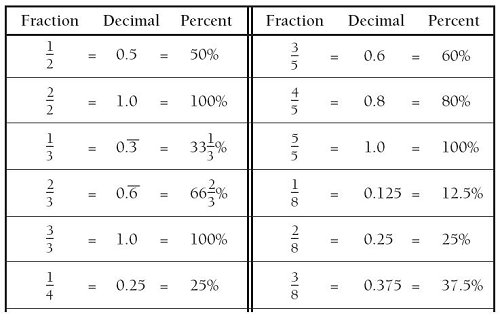

- #CONVERTING RATIOS TO PERCENTAGES CALCULATOR FULL#
- #CONVERTING RATIOS TO PERCENTAGES CALCULATOR PLUS#
Compare the changes in percentage and percentage points. The same survey showed that in the dry season in 2007, that figure dropped to sixty percent (60%). In a survey of road accidents in Durban, South Africa, it was discovered that during the rainy season of 2006, eighty percent (80%) of car accidents involved men. Example 2 shows how similar calculations can be done. To illustrate this, imagine if the government increases taxes from 4% to 6%, that’s a 50 percent tax increase but a 2-percentage point tax increase. However, using one in place of the other can give the information being conveyed a completely different meaning.

In texts and even in presentations, percentage and percentage points are often interchanged. In the example above, we can say that there was an increase in the success rate by 25 pp.ĭistinguishing Between Percentage and Percentage Point Step 3: Add your unit (percentage points): The difference in exam success rates between 20 is 25 percentage points. Step 2: Subtract the smaller percentage from the larger percentageĬhange in exam success rates = 65 - 40 = 25 Step 1: Highlight the percentages you need to compare. To calculate the percentage point, follow these steps: What is the change in the examination success rates between 20? In 2019, in the same school, sixty-five percent (65%) of students passed the same examinations, and in 2020, 69% were successful. Andrew’s Catholic Boys’ School, forty percent (40%) of students passed the A levels mock examinations that were administered by the state. Some examples to illustrate the percentage point calculations are given below: Example 1

Many statisticians and analysts prefer the use of percentage points to percentages when comparing amounts. Percentage point is used in a wide range of applications, ranging from probability studies to fault/ risk analysis to descriptive statistics to investment predictions.
#CONVERTING RATIOS TO PERCENTAGES CALCULATOR FULL#
Percentage point, on the other hand, is a unit of measurement that represents the difference between two percentages.Percentage point is often represented as "pp" or "p.p." In other books, it is written in full as “percentage points” or “percent points” to avoid confusing it with “pages.” Understanding Percentage Point Percentages are similar to ratios, but they're expressed as a fraction of 100. Ratios express the quantitative relationship between values by showing how many times one is contained in another. Some of these metrics include ratios, percentages, and percentage points. Hence the probability is 25%.In mathematics, there are various metrics used to simplify or explain events or outcomes - especially those that involve changes or comparison. Implied Probability Odds correlate to probability e.g a 3/1 bet is expected to win one in every 4 attempts. american odds of -120 would win £100 on a £120 bet. Negative figures: The odds state how much must be bet to win £100 profit e.g.american odds of 110 would win £110 on a £100 bet. Positive figures: The odds state the winnings on a £100 bet e.g.For example, if £5 is bet at odds of 3 the total returned is £15 (£5 * 3) the potential profit is £10 (£5 * 3 minus the £5 stake). Decimals Decimals quote the potential return should the bet succeed relative to the stake.
#CONVERTING RATIOS TO PERCENTAGES CALCULATOR PLUS#
For example, if £5 is bet at odds of 2/1 the potential profit is £10 (£5 * 2) and the total returned is £15 (£10 plus the £5 stake). Fractions Used primarily in the UK and Ireland, fractions quote the potential profit should the bet succeed relative to the stake. Implied Probability is also useful when evaluating a bet or checking how likely an outcome is. There are 3 methods of stating odds that most bookmakers and websites support. Format Definitions - Odds and Probabilities


 0 kommentar(er)
0 kommentar(er)
